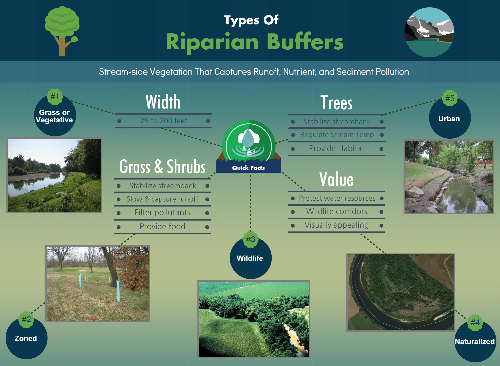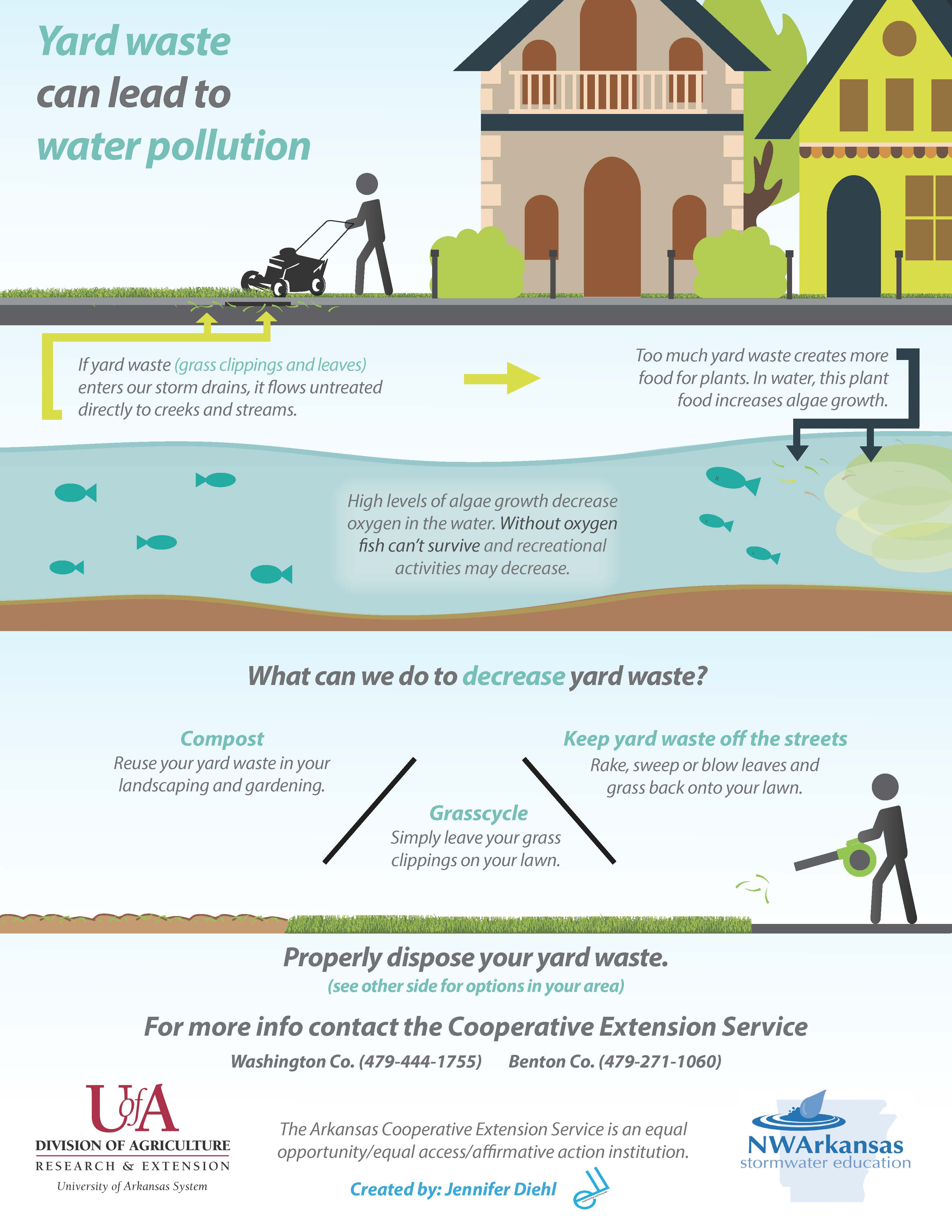Washington County, Arkansas Water Quality
For more detailed water quality information visit our NWA Stormwater Education Page.
Listen to the Extension's Water Connections Radio Archive
The Extension's Water Connections was a collaboration between KUAF and the University of Arkansas System Division of Agriculture Cooperative Extension Service to recognize National Water Quality Month.
Watch Our Clean Water Video Podcast Archive
The Clean Water Podcasts are a series of 2 to 4 minute educational videos that inform viewers about clean water protection and pollution prevention.
 You can also view videos on our YouTube Channel CleanWater@UAEX
You can also view videos on our YouTube Channel CleanWater@UAEX
Water Quality Infographics
Riparian Buffer Infographic (click image to view)

Riparian buffers are designated areas along streams or rivers that host diverse vegetation, help slow runoff, capture nutrients and sediment, and protect stream banks from erosion. Riparian areas may be categorized by their function or location. Examples include grass or vegetative buffers, zoned buffers, wildlife buffers, urban buffers, and naturalized buffers. Riparian buffers may range in width from the immediate stream side to several hundred feet. The vegetation may feature grass, shrubs, trees, or ideally, a diverse mixture of plant types. This vegetation helps stabilize stream banks, slow and capture runoff, filter pollutants, provide food and habitat, and regulate stream temperature. Riparian buffers provide many public benefits and value to landowners by protecting water resources, providing wildlife corridors, and keeping natural, stream-side areas visually appealing.
Yard Waste Infographic (click image to view)
If yard waste such as grass clippings and leaves enters our storm drains, it flows
untreated directly to creeks, streams, and lakes. As yard waste breaks down, nutrients
that are released can lead to water pollution. High levels of nutrients create more
food for plants. In water, this plant food increases algae growth.
High levels of algae growth, called blooms, decrease oxygen in the water. Without oxygen fish and other aquatic animals can’t survive and recreational activities may decrease.
You can stop yard waste from ever entering a storm drain or waterway with the following practices:
- Compost your yard waste into rich humus and reuse in your landscaping and gardening.
- Grasscycle - Simply leave your grass clippings on your lawn to return nutrients and moisture back to your soil.
- Rake, sweep or blow leaves and grass back onto your lawn.
- Keep yard waste off the streets, sidewalks, and driveways, and gutters.
- Properly dispose of your yard waste. Find out if your city or county provides pick-up or drop-off locations for yard waste.